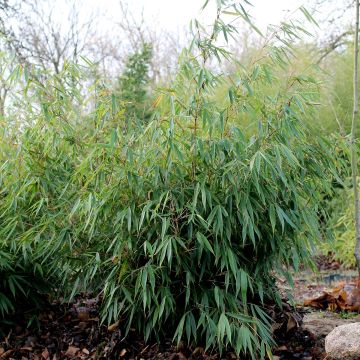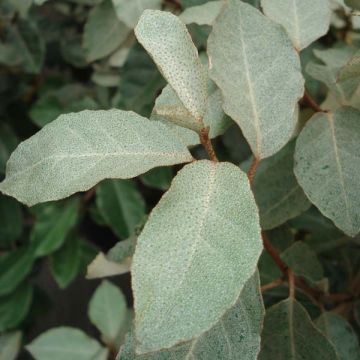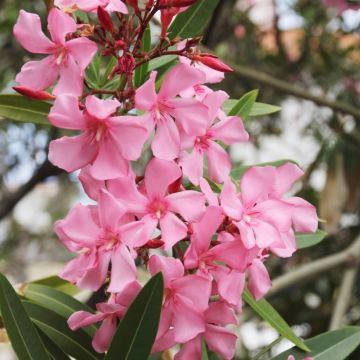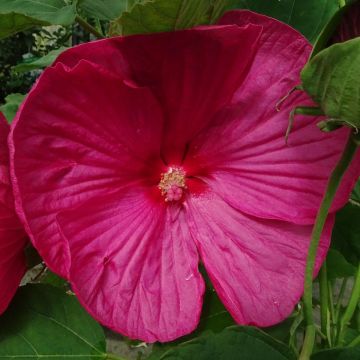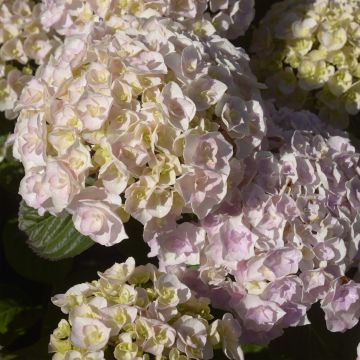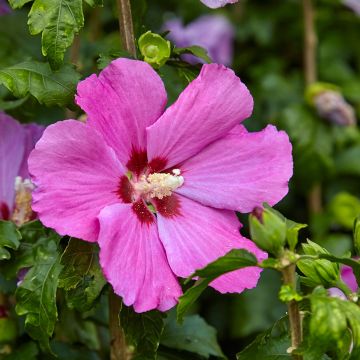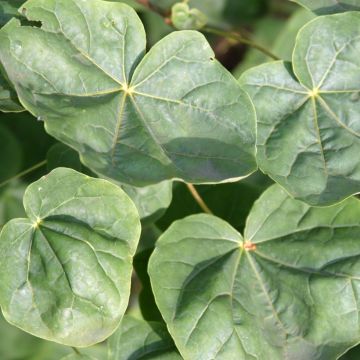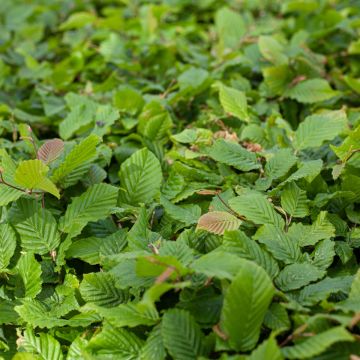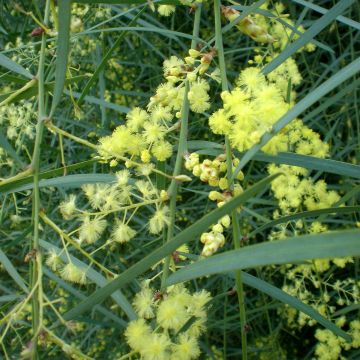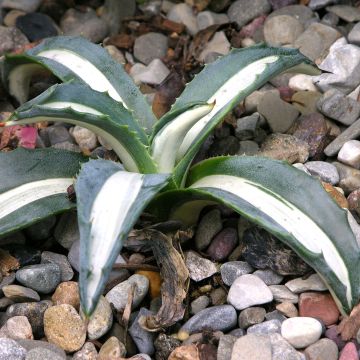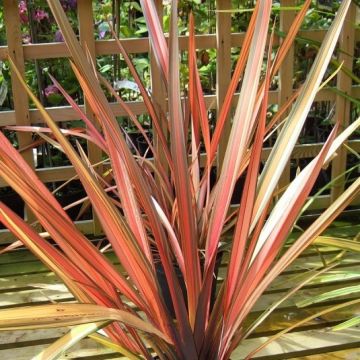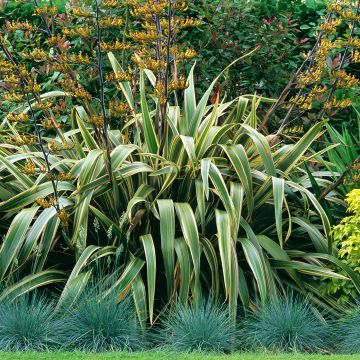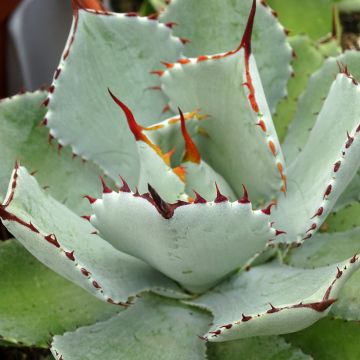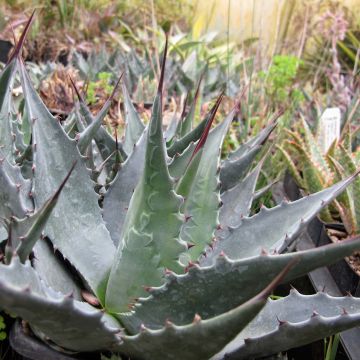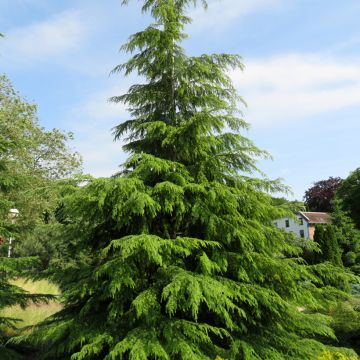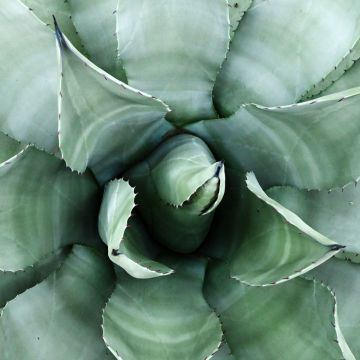

Eriobotrya japonica Coppertone - Néflier du Japon
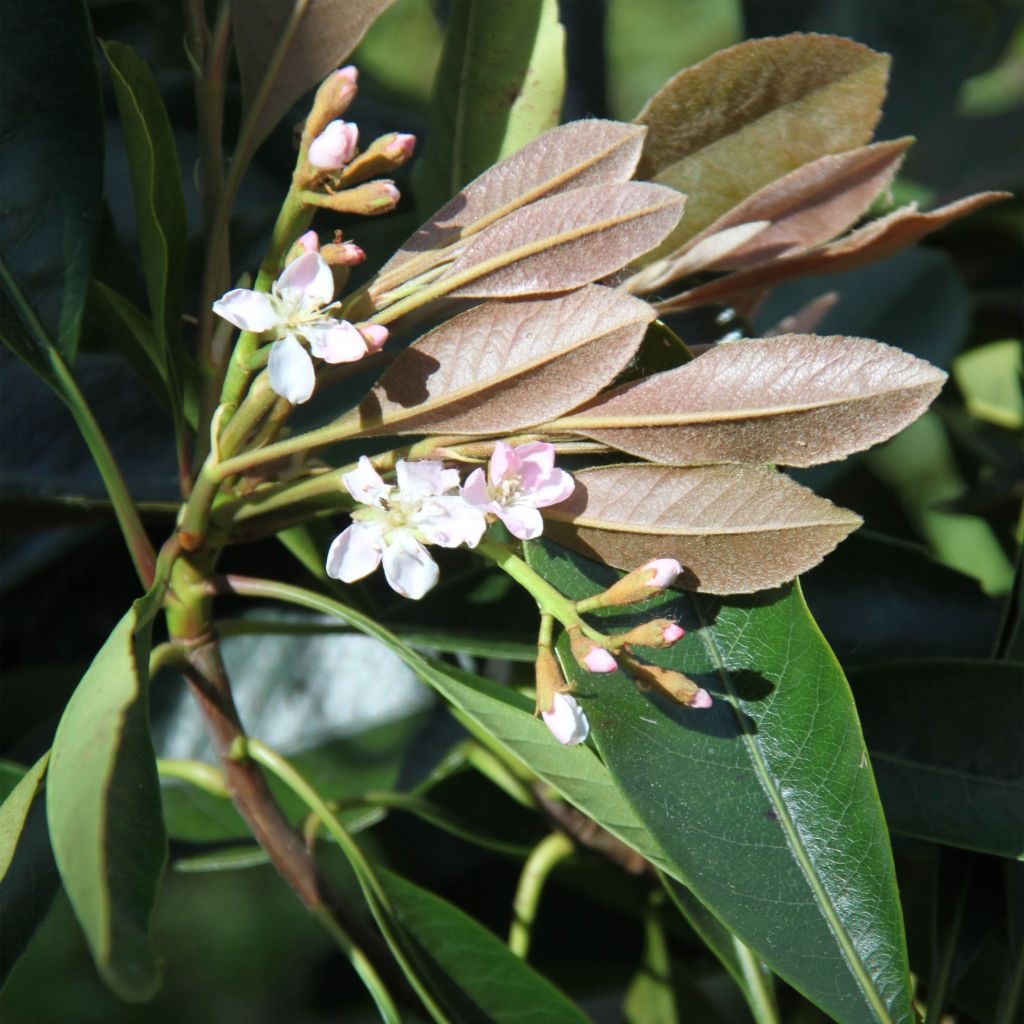

Eriobotrya japonica Coppertone - Néflier du Japon
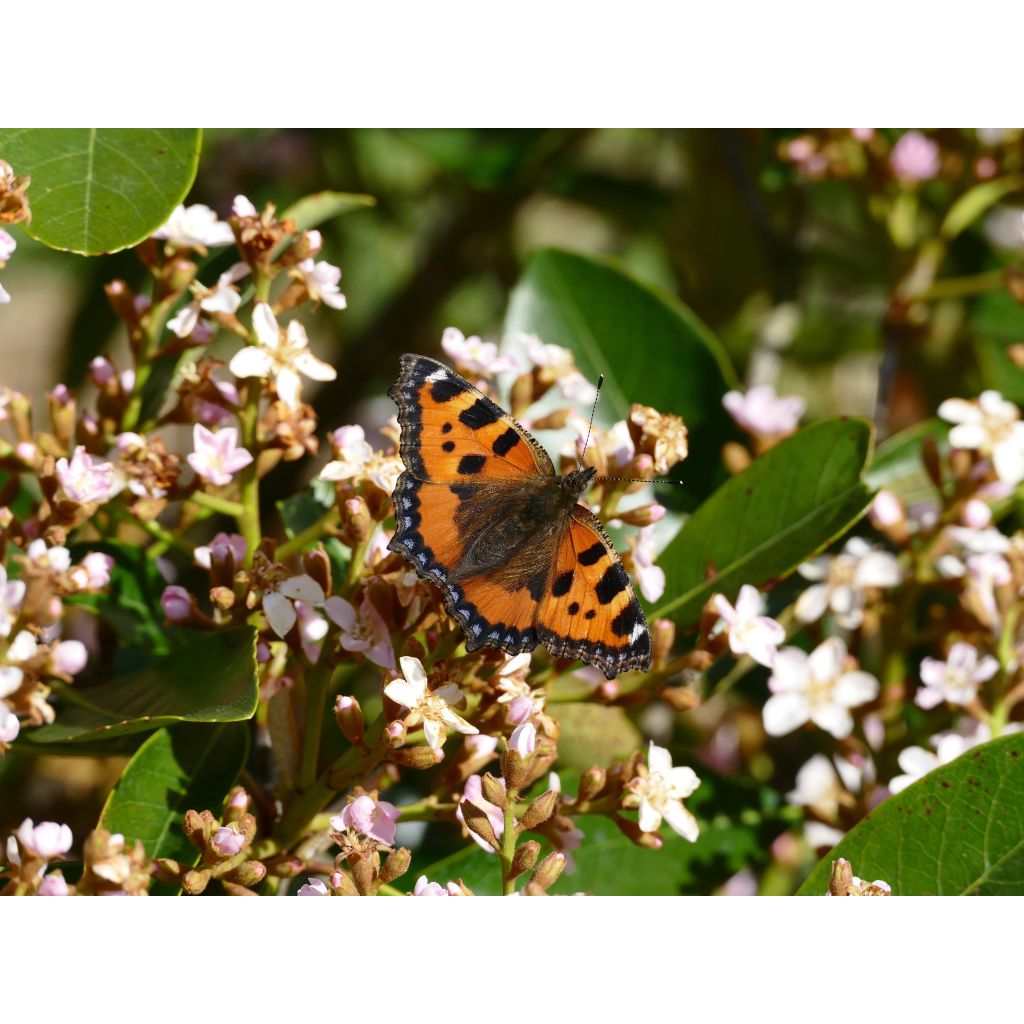

Rhaphiobotrya Coppertone - Hybrid loquat
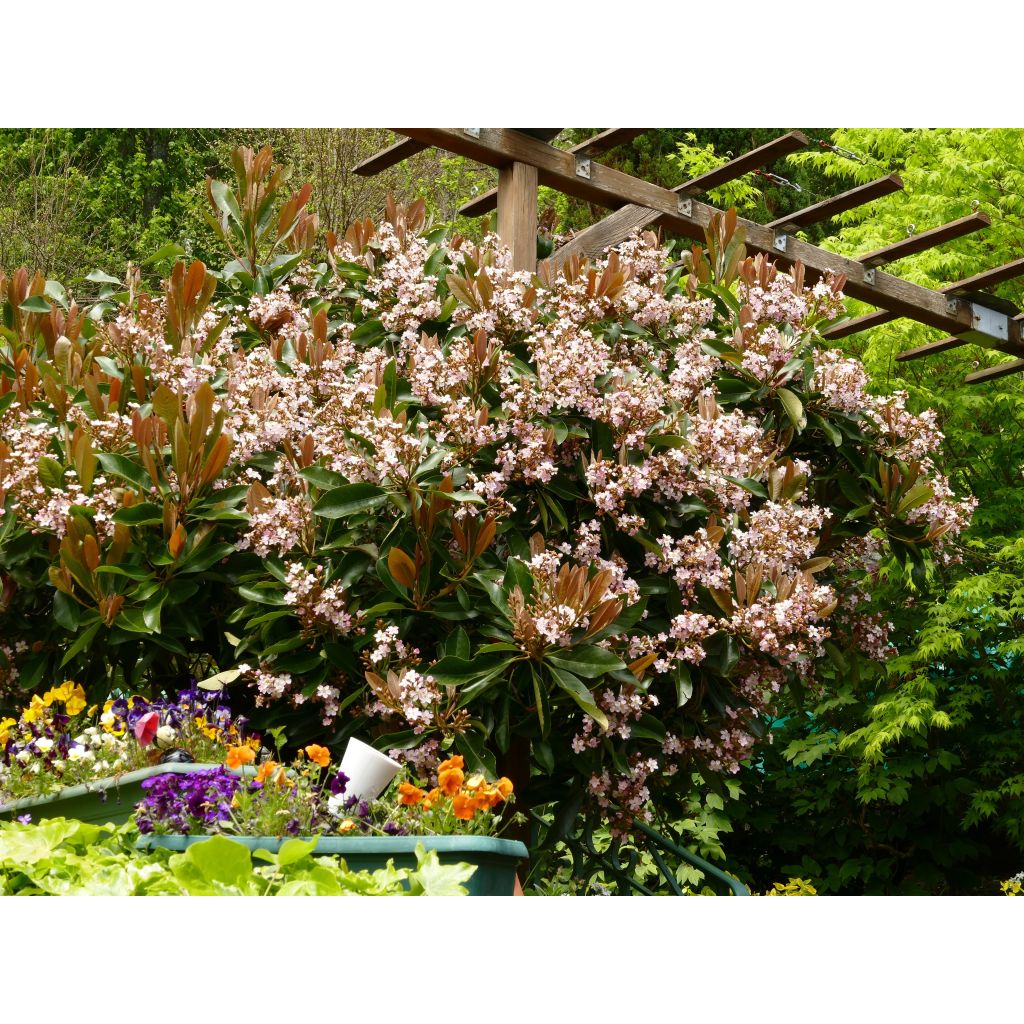

Rhaphiobotrya Coppertone - Hybrid loquat
View more pictures
Hide images

Paysage H.

Natal Plum Rhaphiobotrya 'Coppertone' with a subtle honey-like fragrance reminiscent of Oleander
Paysage H. • 26 FR
Rhaphiobotrya Coppertone - Hybrid loquat
(x) Rhaphiobotrya 'Coppertone'
Hybrid loquat
Hello, The tree arrived last December with a few small spots on the foliage. In spring, I removed them, and new leaves have since grown without any spots. It's been six months since I planted it, and it's thriving despite the intense heat in my region. Thank you, Promesses de fleurs, for the great selection you offer.
Valérie région PACA, 26/06/2025
Special offer!
Receive a €20 voucher for any order over €90 (excluding delivery costs, credit notes, and plastic-free options)!
1- Add your favorite plants to your cart.
2- Once you have reached €90, confirm your order (you can even choose the delivery date!).
3- As soon as your order is shipped, you will receive an email containing your voucher code, valid for 3 months (90 days).
Your voucher is unique and can only be used once, for any order with a minimum value of €20, excluding delivery costs.
Can be combined with other current offers, non-divisible and non-refundable.
Home or relay delivery (depending on size and destination)
Schedule delivery date,
and select date in basket
This plant carries a 24 months recovery warranty
More information
We guarantee the quality of our plants for a full growing cycle, and will replace at our expense any plant that fails to recover under normal climatic and planting conditions.

Would this plant suit my garden?
Set up your Plantfit profile →
Description
Rhaphiobotrya 'Coppertone' is a evergreen hybrid shrub that is as ornamental as it is astonishing. It is the result of cross-breeding between a loquat and a rhaphiolepis. Its foliage emerges coppery, like that of a Photinia, and its spring flowering is incredibly generous, with fragrant panicles of small pale pink flowers that resemble those of a Raphiolepis. Despite a lack of extensive research, it seems that this shrub easily adapts to any ordinary soil, even dry in summer, and can withstand short frosts of around -10/-12 °C (14/10.4°F) in a sheltered position. These qualities make it tempting to try growing it in the ground or in a container in many mild regions!
Rhaphiobotrya 'Coppertone' is sometimes presented as a cultivar of Eriobotrya japonica (also known as the Japanese loquat or bibacier), and it is also found in horticultural trade under names such as Eriobotrya deflexa 'Coppertone', Rhaphiolepis indica 'Coppertone', or Rhaphiolepis 'Coppertone'. However, it is probably a hybrid between an Eriobotrya deflexa (the Taiwan loquat, or bronze loquat, a large evergreen Chinese bush with coppery young leaves, not very hardy, with autumn flowering) and another ornamental plant from the vast Rosaceae family: Rhaphiolepis indica (smaller, slightly hardier, with pink and fragrant spring and autumn flowering). It was obtained a few years ago in Oregon.
Rhaphiobotrya 'Coppertone' is an evergreen shrub with a broad, bushy habit, slightly taller than wide. Its growth is rather slow, depending on the growing conditions, but faster than that of a Raphiolepis. At maturity, it will reach about 4.50 m (15ft) in height and 3 m (10ft) in spread under good conditions. In pots, its dimensions will not exceed 2 m (7ft) in all directions. Its leaves, coppery brown when they emerge, then turn a medium green colour with a glossy appearance. Entire and irregularly dentate along the edges, the leaves vaguely resemble those of a chestnut tree or a loquat. They are thick, leathery, elongated in shape, and measure an average of 14 cm (6in) in length and 4 cm (2in) in width. The flowering occurs quite early in spring, in March-April, depending on the climate. It sometimes blooms again in late summer in moist soil. At the tips of the branches, panicles or thyrses composed of numerous small star-shaped flowers, 1 to 2 cm (1in) in diameter, appear. The flowers are white suffused with pink and pleasantly fragrant. This flowering attracts pollinators. After pollination, fleshy and edible fruits, the size and shape of small plums, form in favourable climates, with a yellow-orange colour.
The hybrid loquat 'Coppertone' is a superb ornamental shrub that should definitely be tested. Apparently hardy down to -12 °C (10.4°F) in sheltered locations, it performs very well in soils that get dry in summer, even with a certain amount of lime. It should thrive in many coastal regions or even inland, in areas spared from severe frosts. Perhaps even in more continental climates, planted in the ground against a south-facing wall, in a large container on a well-protected terrace or balcony. Easy to grow in ordinary soil, this shrub is endowed with unique charm. It will find its place in a flowering hedge, a large shrub border, or as a standalone plant in a small garden. It can also become a highly prized and beautiful specimen on the terrace, alongside oleanders, mimosas, or escallonias.
Report an error about the product description
Rhaphiobotrya Coppertone - Hybrid loquat in pictures
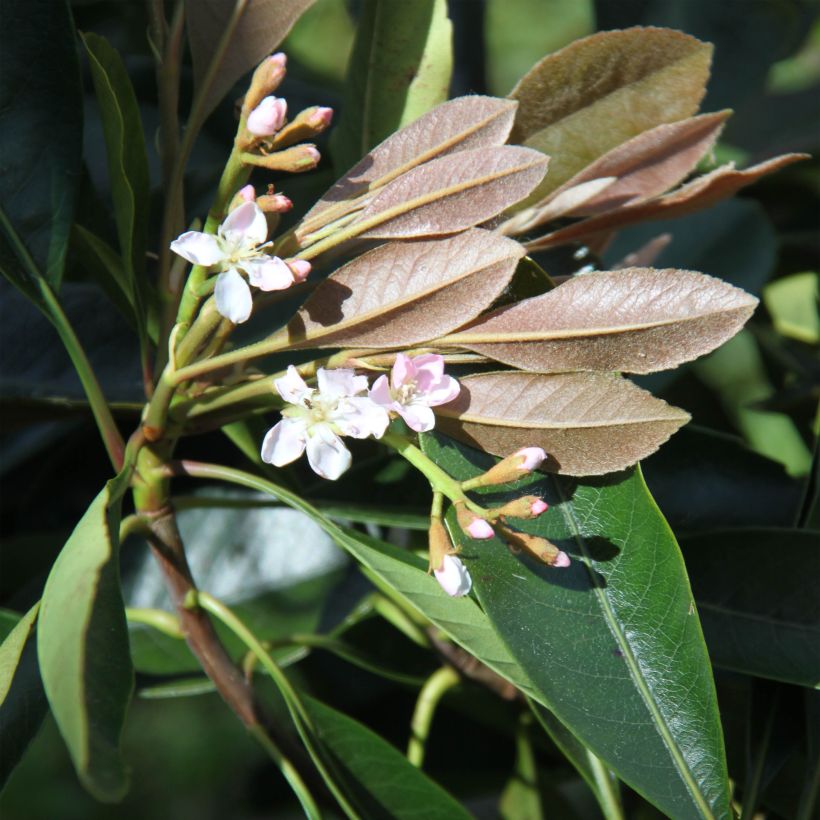

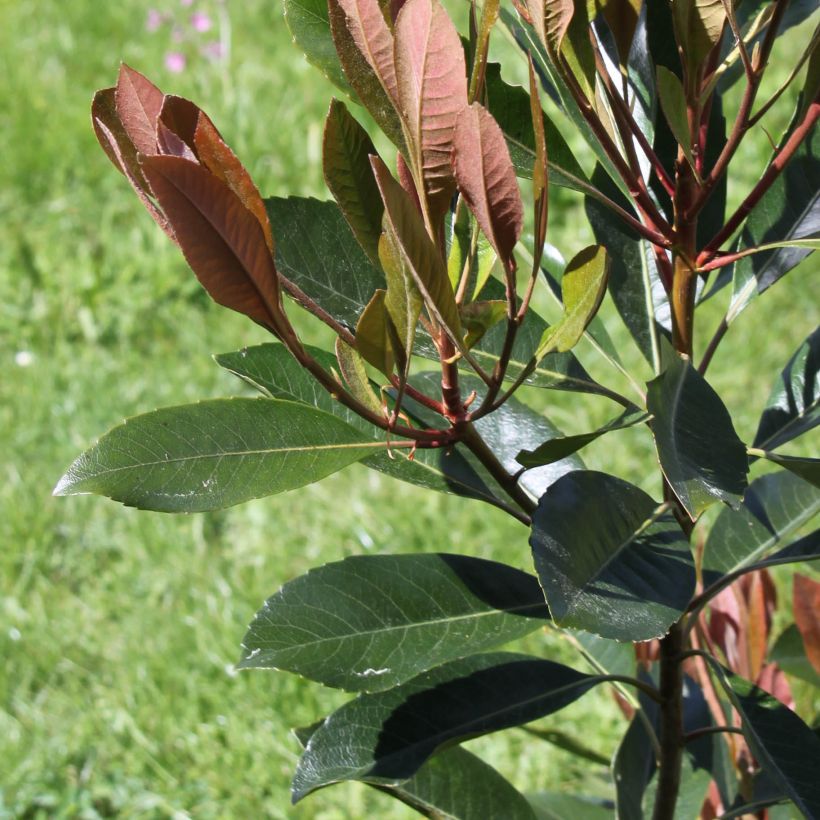

Plant habit
Flowering
Foliage
Botanical data
(x) Rhaphiobotrya
'Coppertone'
Rosaceae
Hybrid loquat
Cultivar or hybrid
Other Shrubs A to Z
View all →Planting and care
Easy to grow in ordinary soil and tolerant of summer drought once well established, the Coppertone hybrid loquat thrives in full sun or partial shade, in deep, loose soil with a limited lime content. It only fears excess limestone and highly compacted clay soils. Planting is preferably done in autumn in warm and dry climates, to promote root growth, or in spring in borderline hardiness zones. Hardy down to -10/-12 °C (14/10.4°F) once established, it may be useful to protect young plants with a thick winter fleece in case of severe frost. A spring application of well-decomposed compost will be beneficial, improving its growth and making its foliage shine. Like Rhaphiolepis, this variety may be susceptible to bacterial fire blight and powdery mildew, as well as attacks from the fungus responsible for leaf spot disease.
Planting period
Intended location
Care
-
, onOrder confirmed
Reply from on Promesse de fleurs
Similar products
Haven't found what you were looking for?
Hardiness is the lowest winter temperature a plant can endure without suffering serious damage or even dying. However, hardiness is affected by location (a sheltered area, such as a patio), protection (winter cover) and soil type (hardiness is improved by well-drained soil).

Photo Sharing Terms & Conditions
In order to encourage gardeners to interact and share their experiences, Promesse de fleurs offers various media enabling content to be uploaded onto its Site - in particular via the ‘Photo sharing’ module.
The User agrees to refrain from:
- Posting any content that is illegal, prejudicial, insulting, racist, inciteful to hatred, revisionist, contrary to public decency, that infringes on privacy or on the privacy rights of third parties, in particular the publicity rights of persons and goods, intellectual property rights, or the right to privacy.
- Submitting content on behalf of a third party;
- Impersonate the identity of a third party and/or publish any personal information about a third party;
In general, the User undertakes to refrain from any unethical behaviour.
All Content (in particular text, comments, files, images, photos, videos, creative works, etc.), which may be subject to property or intellectual property rights, image or other private rights, shall remain the property of the User, subject to the limited rights granted by the terms of the licence granted by Promesse de fleurs as stated below. Users are at liberty to publish or not to publish such Content on the Site, notably via the ‘Photo Sharing’ facility, and accept that this Content shall be made public and freely accessible, notably on the Internet.
Users further acknowledge, undertake to have ,and guarantee that they hold all necessary rights and permissions to publish such material on the Site, in particular with regard to the legislation in force pertaining to any privacy, property, intellectual property, image, or contractual rights, or rights of any other nature. By publishing such Content on the Site, Users acknowledge accepting full liability as publishers of the Content within the meaning of the law, and grant Promesse de fleurs, free of charge, an inclusive, worldwide licence for the said Content for the entire duration of its publication, including all reproduction, representation, up/downloading, displaying, performing, transmission, and storage rights.
Users also grant permission for their name to be linked to the Content and accept that this link may not always be made available.
By engaging in posting material, Users consent to their Content becoming automatically accessible on the Internet, in particular on other sites and/or blogs and/or web pages of the Promesse de fleurs site, including in particular social pages and the Promesse de fleurs catalogue.
Users may secure the removal of entrusted content free of charge by issuing a simple request via our contact form.
The flowering period indicated on our website applies to countries and regions located in USDA zone 8 (France, the United Kingdom, Ireland, the Netherlands, etc.)
It will vary according to where you live:
- In zones 9 to 10 (Italy, Spain, Greece, etc.), flowering will occur about 2 to 4 weeks earlier.
- In zones 6 to 7 (Germany, Poland, Slovenia, and lower mountainous regions), flowering will be delayed by 2 to 3 weeks.
- In zone 5 (Central Europe, Scandinavia), blooming will be delayed by 3 to 5 weeks.
In temperate climates, pruning of spring-flowering shrubs (forsythia, spireas, etc.) should be done just after flowering.
Pruning of summer-flowering shrubs (Indian Lilac, Perovskia, etc.) can be done in winter or spring.
In cold regions as well as with frost-sensitive plants, avoid pruning too early when severe frosts may still occur.
The planting period indicated on our website applies to countries and regions located in USDA zone 8 (France, United Kingdom, Ireland, Netherlands).
It will vary according to where you live:
- In Mediterranean zones (Marseille, Madrid, Milan, etc.), autumn and winter are the best planting periods.
- In continental zones (Strasbourg, Munich, Vienna, etc.), delay planting by 2 to 3 weeks in spring and bring it forward by 2 to 4 weeks in autumn.
- In mountainous regions (the Alps, Pyrenees, Carpathians, etc.), it is best to plant in late spring (May-June) or late summer (August-September).
The harvesting period indicated on our website applies to countries and regions in USDA zone 8 (France, England, Ireland, the Netherlands).
In colder areas (Scandinavia, Poland, Austria...) fruit and vegetable harvests are likely to be delayed by 3-4 weeks.
In warmer areas (Italy, Spain, Greece, etc.), harvesting will probably take place earlier, depending on weather conditions.
The sowing periods indicated on our website apply to countries and regions within USDA Zone 8 (France, UK, Ireland, Netherlands).
In colder areas (Scandinavia, Poland, Austria...), delay any outdoor sowing by 3-4 weeks, or sow under glass.
In warmer climes (Italy, Spain, Greece, etc.), bring outdoor sowing forward by a few weeks.






























